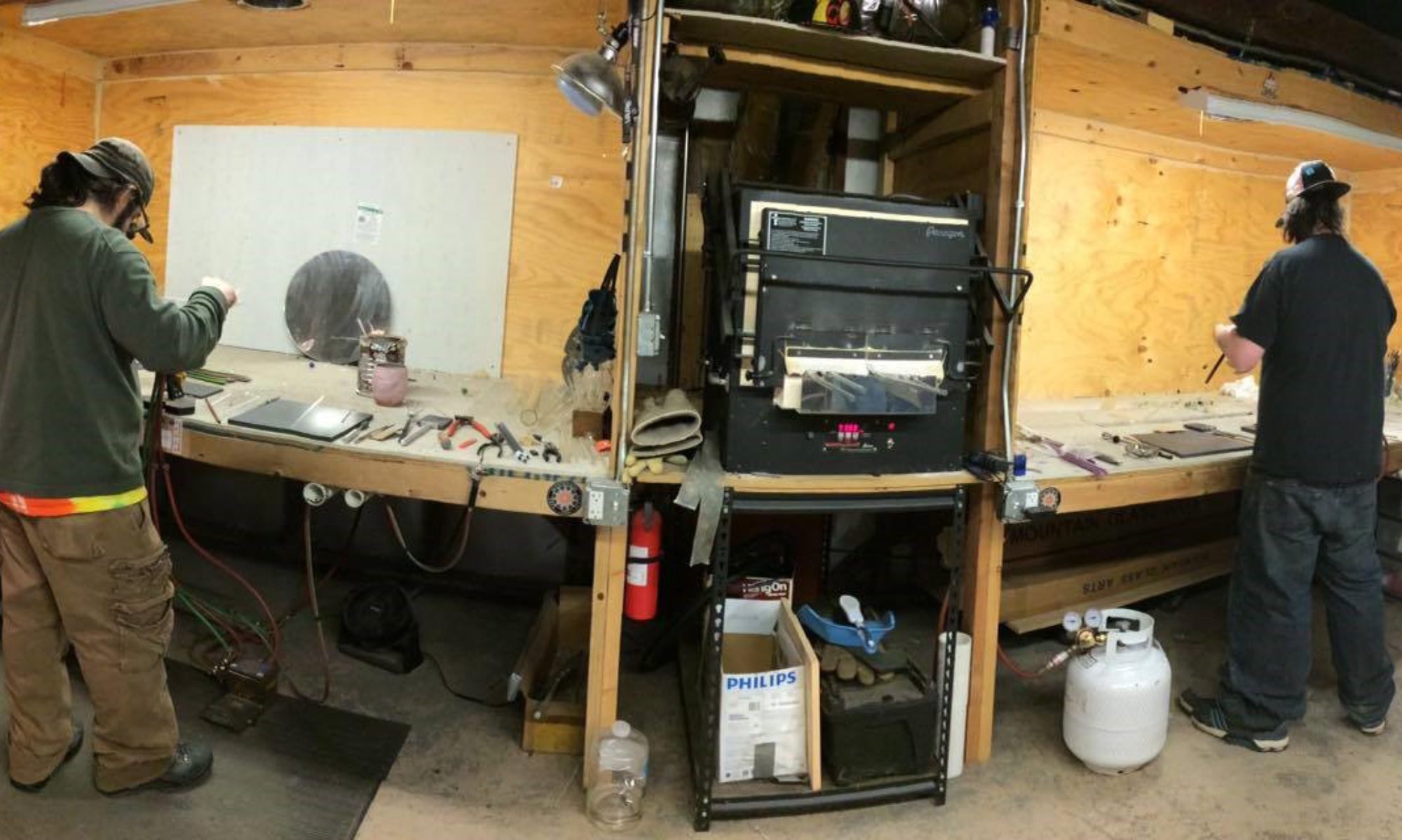
Every shop has it’s own pricing method. There are a lot of factors that come into play here; locations, demographics, laws, size of a shop ect. By no means am I trying to discount any of the different specifics related to any certain store. These are general concepts to think about. While all of the factors do have their value, to be bound by them, I fear, could lead to disaster. The reason for this extreme statement is the continued growth of online sales, whether through social media, websites or even the direct to consumer avenues some artists have started to take. The following are some strategies that can be used to combat the growing and changing forms of competition.
The first thing to do is determine how much it costs each month to have products on display. To make it easy, total monthly expenses (including employees ect.) divided by the total square inches to determine how much per square inch you are paying. This helps see how much it costs to display a small chillum versus a large rig with a 7 inch base. By looking at this it gives a better idea of what sort of margins are achieved with each sale.
Now that a dollar amount is established for each of the different spots in your shop, you can see the actual display costs and evaluate your margins on the different products. When it comes to the general expectation of doubling the wholesale price, this concept is a good general rule of thumb but cant be across the board. Let’s assume each square inch costs $1/month (which most likely is ubsurdly high). With a 3 inch cullum that is $3/month. It costs $10 for the chillum, then doubling ($20) offers a $7 profit if they are sold in 1 month. If you can run on a smaller margin these can easily be re ordered and when working with artists, the more you order the better the price of course, therefore increasing your margin, and reducing your display costs if they can be sold faster.
Now let’s take a $500 rig that has a huge base of 9 sq inches. This costs $9/month. If you double the $500 to retail for $1000 that is a $491 profit if it sells in one month. This doesnt happen often without it being a big name, of course, so let’s say 6 months for a cost of $54. The profit here would be $446. So with prodo, we can understand sales velocity being the hack to higher profits, why would this not be true fo headies? If everyone doubles, why not shift thinking to margin in dollars for headies. This decreases the total dollar margin but can reduce your holding time/expense with the heady being 3 times the of the chillum. Other benefits of increasing your turnover is the intrinsic advertising aspect of having new things for your customers to come an enjoy. While they may not be buying the expensive pieces, they will be in your store and have a good chance they will buy a less expensive piece. This can increase your customer traffic and the word of mouth to come see the new pieces on a weekly basis. Hopefully as a result, just like with prodo your artist will work out better deals for you because you are turning their product over that much quicker then other shop. With the increase in direct to consumer sales happening more and more, I see this as being the future for shops. Some shops that do this already see great customer interaction and increase recurring customer traffic to see all of the new stock on a weekly basis.
The last thoughts I want to share is with how some shops need to sell imports. While I went into why I dont like imports in a previous post. I do understand they are a necessary evil. When it comes down to it, imports are not even in the same realm as American glass. The customers looking for imports are not looking at American made products, they are a different demographic. All this being said, segregation IS KEY! Customers dont want to be tricked, and it’s hard to tell the difference to the untrained eye sometimes. Separating imports and American help promote confidence in your customer knowing what they they are looking at what they are interested in. Lastly, and maybe not super important, but it will also give confidence to the glassblowers come in to sell their glass. As they can see your a shop owner that cares to keep their work separate from the imports.
All in all, we are all striving to do the best we can by our customers and our businesses. In times that are changing so quickly, we have to stay relevant and adjust. The online shops have lower overhead, artists selling direct to consumer are doing so at a price between wholesale and general store pricing of double wholesale, in order to stay in the game, some of these tactics will hopefully help. There is much more in detail as to the rationale behind these statements. I will go into that more in the future. I just wanted to start with a general thesis.
Thank you for taking the time to read this long winded string of concepts I have seen used over the years.


